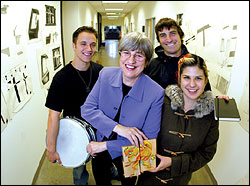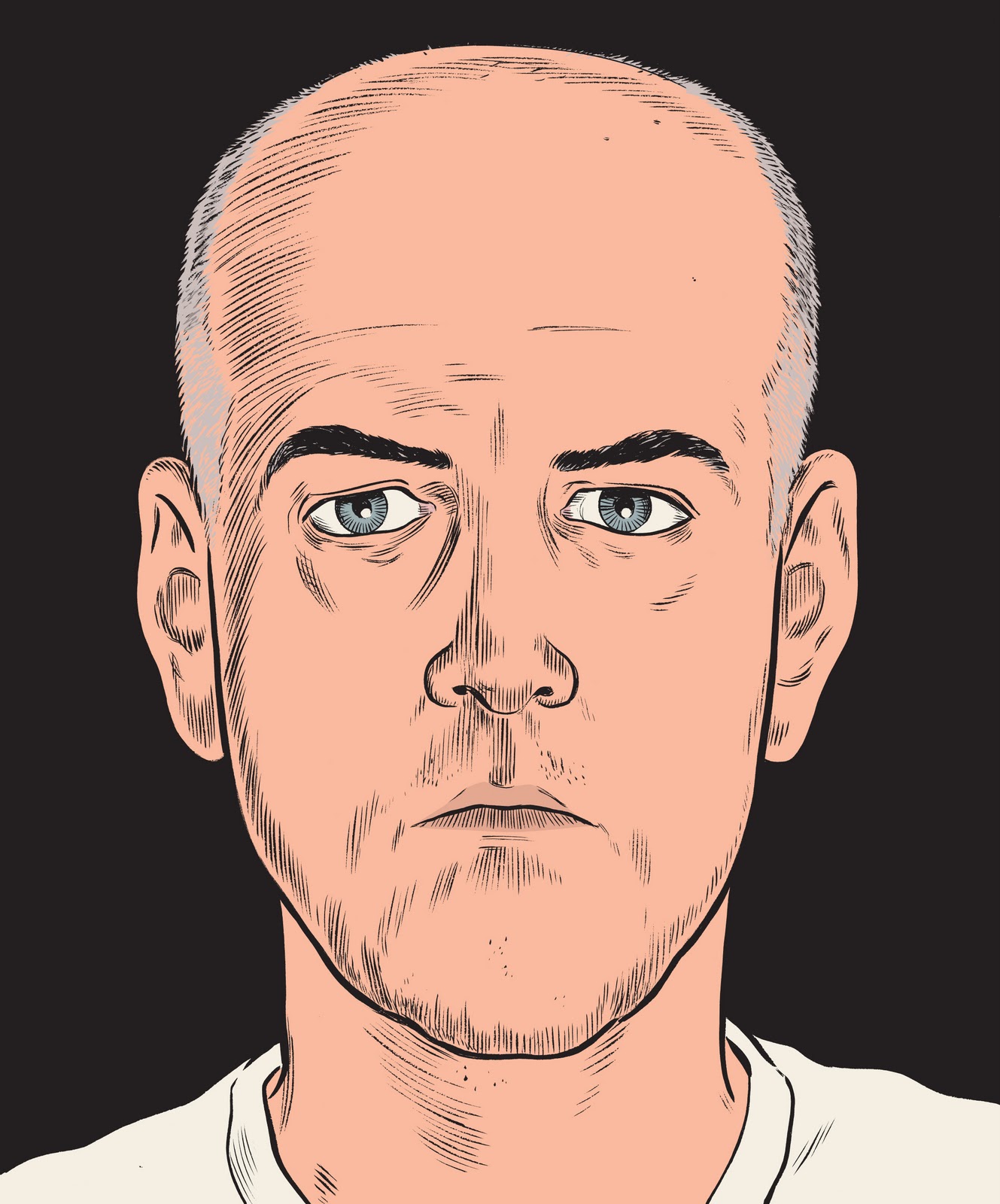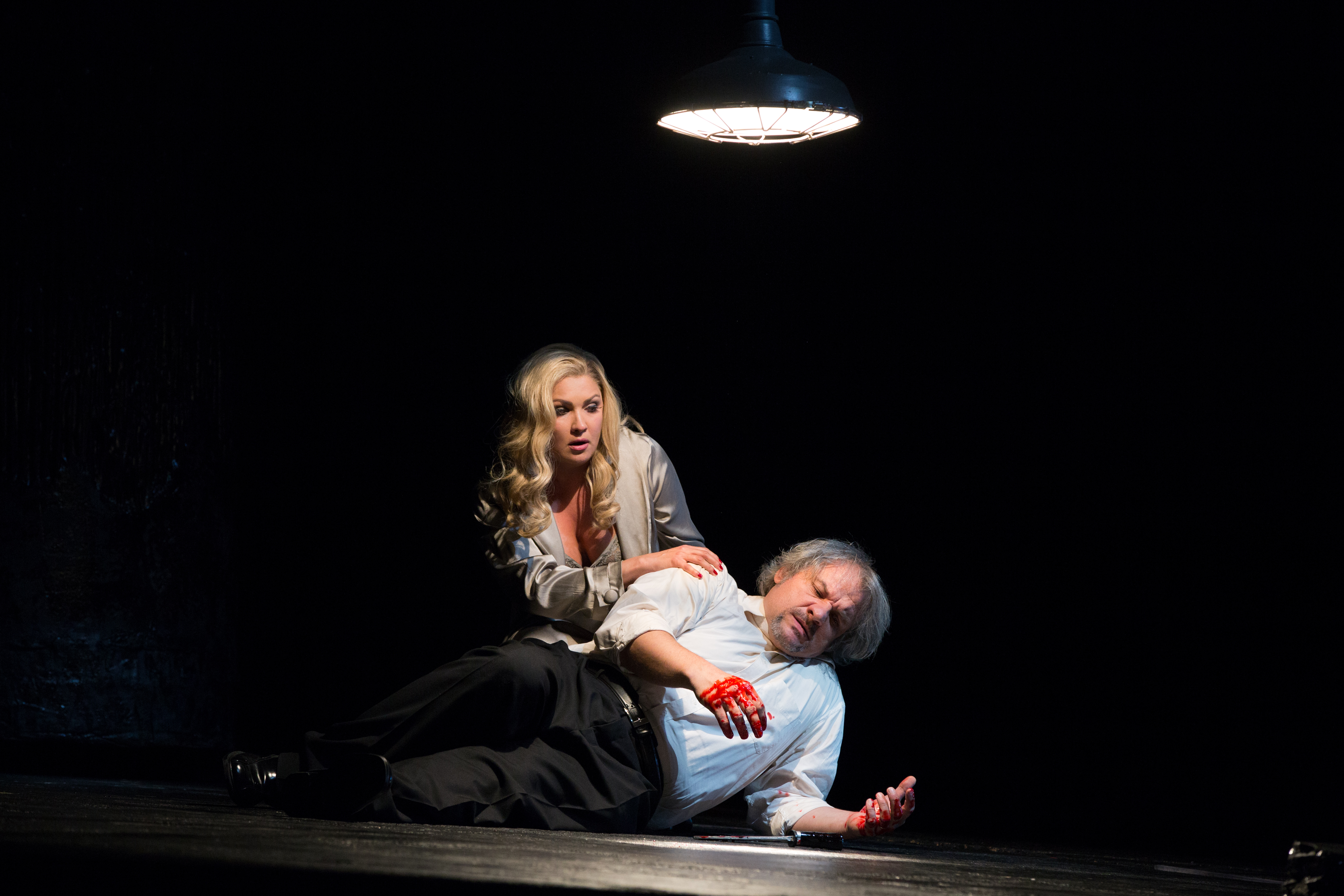Until recently, two spindly metal scarecrows topped by horizontal pinwheels stood guard on either side of state Route 520 where it bridges the shallows of Portage Bay. Even on a sunny day, their aspect was melancholy. Even more melancholy for the few drivers who knew that their official name was “the Nellie Cornish Memorial Sculptures,” but fitting in a way—a wan reflection of the dwindled heritage of the Seattle educational pioneer whose name they bore.
In 2003, the donor of the freeway-side doodads, perhaps realizing that they projected a weak image, had them replaced by larger and considerably uglier objects. Nellie Cornish’s memory deserves better; even more so does the revivified institution she founded. Thirty years ago, the once visionary college had drifted toward becoming a facility, not a school; a collection of teachers’ studios, not a conservatory. But slowly, almost under the radar, Cornish has come back from irrelevance and financial scrabbling to new life and liveliness. Cornish’s Nov. 20 gala at the Sheraton Ballroom nominally celebrates the 75th anniversary of Martha Graham’s first solo recital at Cornish, but alumni, patrons, and fans are also hoping the event will mark the return of Cornish to a potent, central role on the Northwest and national arts scene.
Cornish School began modestly enough as a music conservatory in 1914, but grew under the driving leadership of “Miss Nellie” until, by the mid-1930s, it had become a major nesting ground for America’s nascent dance, music, and art avant-garde. In the latter ’30s, the school became a hotbed of interarts collaboration—the 50-year personal and artistic association between composer-sage John Cage and dance pioneer Merce Cunningham began here. Always struggling financially, often on life support, Cornish School continued to play a role in the community, but after World War II, slowly came to face competition—for students, as the land-grant universities built their arts departments into virtual conservatories of their own; and for donor dollars, as local performing arts institutions grew from bush-league status to national visibility.
In the 1970s, Cornish struck back, reorganizing itself into a degree-granting college, but despite the change, the institution continued to gasp for air. What, precisely, was the advantage of attending Cornish when the University of Washington offered so much more and cost so much less? While “The Arts” were enjoying an unprecedented level of attendance and funding in Seattle, Miss Nellie’s dignified stone fortress on Roy Street off Broadway became a backwater, with an underpaid, mostly part-time teaching staff and an administration that had lost sight of her vision of an institution where artists in all disciplines could not only learn in the same environment but also interact fruitfully with each other.
Cornish’s big turnaround began just over 10 years ago when the board hired Sergei Tschernisch as president. Tschernisch began his professional life as an actor, studying with the impeccably avant-garde Actors Workshop in San Francisco, but he’s spent most of his time since as an arts administrator, most often—as at the California Institute of the Arts, Los Angeles’ Loyola Marymount, and Boston’s Northeastern University— in institution-building mode. He repeated the process in Seattle, spending his first half- decade building up and expanding programs and generating new sources of funding.
By the year 2000, enrollment and other statistics collected by national education- standards groups showed Cornish as flourishing educationally but suffering from severe overcrowding. Programs had sprawled out of the elegant but cramped old building on Roy Street to occupy an array of nearby houses, a large facility on the St. Mark’s Cathedral campus to the north, and other rentals. It was becoming imperative to consolidate, both to save money and to reduce inconvenience for students and staff. But consolidate where, and how to pay for it?
The dot-com bust, which took the wind out of Seattle’s economic sails, proved of paradoxical advantage for Cornish. “Sergei and the board had been looking into possibilities for a move long before I arrived on the scene,” says Jane Ewing, vice president for Institutional Advancement. “They had ID’d a number of potential facilities, and when the dot-com bubble popped, a number of possibilities emerged which had not been possibilities before.” One was the venerable Seattle Design Center building on Denny Way just off Westlake. Formerly filled with to-the-trade furniture and fabric dealers, it had filled up with aspiring software firms that withered in the economic chill as fast as they had sprouted. The board opted for a radical facilities reorganization, keeping only much-loved Kerry Hall on Capitol Hill and selling off all the rest of its property to developers to help finance the move downtown. In addition, the owner of the Design Center cut the price of the building, providing, in effect, an in-kind “lead gift” to kick off fund-raising for the move.

Founder Nellie Cornish (Cornish College of the Arts) |
Ewing is a veteran fund-raiser in the Seattle area, and it wasn’t easy to convince her to take on the job. Pratt Institute was beating the bushes for funds, and the prime tenants of McCaw Hall were having trouble raising their share of the $120 million cost of that building. Before making up her mind, says Provost Lois Harris, Ewing “spent literally an entire summer talking to Sergei and the faculty, learning about our academic mission, the students, and the community. I bought so many lunches for this woman. . . . ” What led Ewing to say yes was the discovery that beneath the surface, “there was such a reservoir of good will for the institution, so many people with multigenerational connections to the school—not just alumni, but people outside the arts but with deep roots in the community.” That fact put Ewing and her fund-raisers one big step ahead of the game. The board signed on to an ambitious $74 million capital campaign, and in September 2003, Cornish College of the Arts opened its downtown doors. Today the campaign is right on target, though half of the total remains to be raised. Promisingly, improvements in faculty pay and benefits were budgeted right in with facilities, as was endowment— during the campaign so far, $650,000 has been added, bringing the total endowment to $5 million.
Call it serendipity or acute planning, but the opening landed Cornish right in the middle of a radical upswing in development. Next door, the first Whole Foods store in downtown Seattle is rising; across Denny sprawls the incalculable future of Paul Allen’s South Lake Union project, due at the very least to relocate downtown’s center of gravity to the north and east. And the school has not been slow to establish liaisons with its new neighbors. A year ago, the Cornish Design Department mounted a three-day exercise on “The Future of South Lake Union” with involvement from the developers who are going to shape that future on the ground. And this summer, the traditional exhibition for graduating seniors in the visual arts was hung in the decidedly nontraditional halls of the Fred Hutchinson Cancer Center, to the apparent pleasure of techies and artists alike.
While making connections to its immediate surroundings, the school is also trying to convince the local arts community that it has professional standards to match its showy new facility. Cornish has always made much of the fact that seminal American artists like Cage, Cunningham, and Graham worked and performed under the school’s auspices in its prewar glory days of artistic achievement. Now there are plans to make that connection more concrete.
One promising first step in that direction has been taken by longtime Cornish Dance Department Chair Kitty Daniels, who came up with the idea of asking permission of the Martha Graham Foundation to restage one of Graham’s signature works, the 1948 Diversion of Angels. Having successfully found funding to bring a Graham teacher to Seattle to set the work on Cornish students, Daniels hopes to develop the Graham connection more deeply in future years. Meanwhile, conversations have already taken place between representatives of Cornish and Peter Boal, the new artistic director of Pacific Northwest Ballet, regarding plans to collaborate in the future.

Cornish President Sergei Tschernisch, a former actor, beefed up programs and found new sources of funding. (Marcy Sutton) |
The long-term viability of a conservatory depends not only on deft fund-raising and community support but on the quality of students it can attract. Fairly or unfairly, during its years in the shadows, Cornish acquired a reputation among some teachers and artists as an undemanding, unselective alternative to college for aspiring arts students too undisciplined (or untalented) to qualify for more rigorous programs. One longtime observer (who has yet to change his opinions about the place) used to call Cornish “the Bin”: a place where well-off and indulgent parents could stash their slacker offspring for a few years in hopes that greater maturity might bring greater discipline.
For Cornish applicants today, it still helps a lot to be well off. Full-time tuition for two semesters runs around $21,000, and per-credit charges of nearly $900 and private- lesson charges topping $300 for a 50-minute hour ensure that no applicant is going to climb aboard casually. (See box, p. 28)
But costs of education of any kind have risen so much that the cost of attending Cornish doesn’t seem all that out of line. Exact comparisons are difficult, but for a rough idea, UW in-state undergraduate tuition runs around $5,500 per year; tuition at the prestigious North Carolina School of the Arts (also state-supported) runs about $14,000 for three quarters of instruction, while CalArts bills its students upward of $27,000. (Seattle’s for-profit Art Institute, primarily focused on direct professional training, charges around $45,000 for an equivalent degree.)
The very mention that some people question the quality of Cornish students or a Cornish education makes Lois Harris bristle. Harris, Cornish’s provost (chief academic administrator), bristles beautifully. A forthright kind of person with a reputation among colleagues for frankness bordering on indiscretion (“Now you’ve promised to behave,” one said in jest as I sat down to interview her), Harris got her bachelor’s (in piano performance studies) from Oberlin in the vintage year of 1968, and served on the faculty of Vermont’s liberal-arts and individual-study mecca Goddard College for nearly 20 years, rising toward the end of her stay to dean of academics. Before being lured to Cornish, she ran the liberal studies program for the Seattle branch of the far-flung experiment in distributed academics, Antioch.
She responds to the “Bin” canard with a brisk five-minute outline of what Cornish does to ensure that admission is available only to the qualified, and to assist the qualified to pay for their education. “Nobody is admitted to this school without either an audition or a portfolio presentation to a committee of the appropriate academic department. Nobody can overrule the decision of those committees. As to the matter of cost, our fees are comparable to those of our peer institutions, and upward of 85 percent of our students receive some form of financial assistance from the institution.”
As for faculty members, efforts to improve their income and financial stability began well before Harris’ arrival and have accelerated since. Two-thirds of all courses are now taught by full-time faculty, twice the former ratio, and salaries for instructors and staff have been improved across the board. “We still have some ground to make up in this area, but we’re coming into parity with our peer institutions at this moment,” Harris says.
But delivering a good education is not, at bottom, a matter of money. Goddard, where Harris first began to operate as an administrator, was deeply imbued with the educational ideas of John Dewey, and Harris’ Ph.D. thesis dealt with Dewey’s (and Hannah Arendt’s) ideas about how judgment and discipline apply to education. One of Harris’ biggest interests upon coming to Cornish was to toughen and focus the school’s general-education program, which now is the basis of every entering student’s first-year Cornish experience. “We want to help them start making links between what they care about as artists and how that fits into the world,” says Harris.
And Cornish has an almost-forgotten ace in the hole. Almost from its beginning, Cornish aspired to encourage artists from different disciplines to work together on their creations. It was that no-rules, no-holds-barred atmosphere that led directly to the multidecade collaborations of Cunningham, Cage, and Robert Rauschenberg. As intergenre barriers continue to fall under the disruptive yet invigorating assault of new technologies and forms of communication, Cornish is positioned by pedigree to surf the wave of the future.
The ultimate test for any educational program, though, is what its products do once they’ve returned to the supposedly real world. It’s impossible to measure, incredibly hard even to come up with an impression of a school’s impact on its graduates five, 10, 20 years down the line. Those one-sentence summaries of “what our graduates are up to” that appear in every school’s alumni magazine are a lousy index. Maybe “Mary Jones has been appointed director of the music program for the Clallam County consolidated school district” is a good thing or a bad thing, for Mary or Clallam County. Who knows? Is the fact that Cornish theater grad Brendan Fraser has played opposite both Ian McKellan and a gorilla evidence of the breadth of Cornish actor training?

Jane Ewing, vice president for institutional advancement. (Marcy Sutton) |
The only way to evaluate the quality of an education is to ask the experts—the people undergoing said education, and the products of the education—both looking back on their own experience and at others emerging from the same process. Joshua Kohl, leader of the multimedia and new-music collective the Degenerate Art Ensemble is a veteran of both the Cornish music program and the rigidly traditional training offered by the Boston Conservatory of Music. “At Boston, they work you so hard that you feel every day that if you don’t keep up, you’re going to fail completely. There’s something to be said for that kind of discipline. Cornish is different. It’s possible to coast, if that’s what you want to do. Nobody is going to make you take advantage of all the resources. You have to be self- motivated, you have to actively pursue the training, take advantage of your proximity to your teachers. Not everybody does that. The ones who do can go as far as their abilities can take them.”
Lane Czaplinski, artistic director of the performance presentation facility On the Boards, goes even further. “I was an adjudicator for the last American College Dance Festival’s regional, and I was really impressed with the work submitted by Cornish students—not just their skill in modern-dance technique, but the sheer quality of their choreography. You hear a lot of doubts about the future of dance in America, but looking at this work, I have no doubts on that point. And you have to credit a lot of that to the Cornish faculty, Kitty and Wade [Madsen] and all the rest. They are not just teaching technique but giving the students the information they need to figure out where they stand with the art they’re making. I’ve come to believe that Seattle is the richest creative community in America outside New York, and I believe a lot of that is due to Cornish, to Cornish grads who have stayed in the community.”









